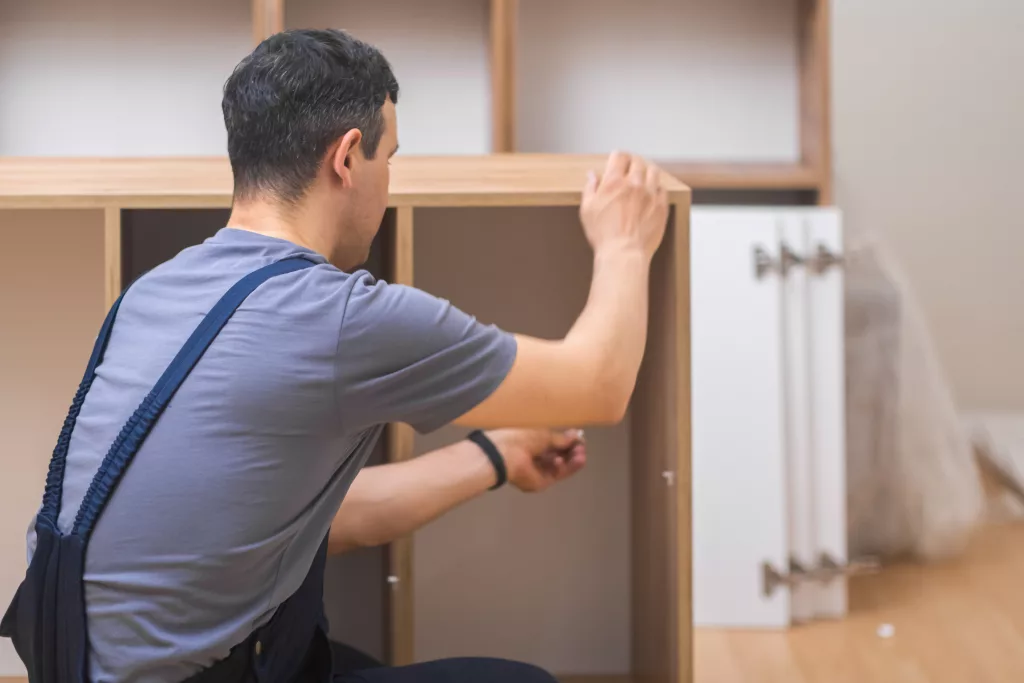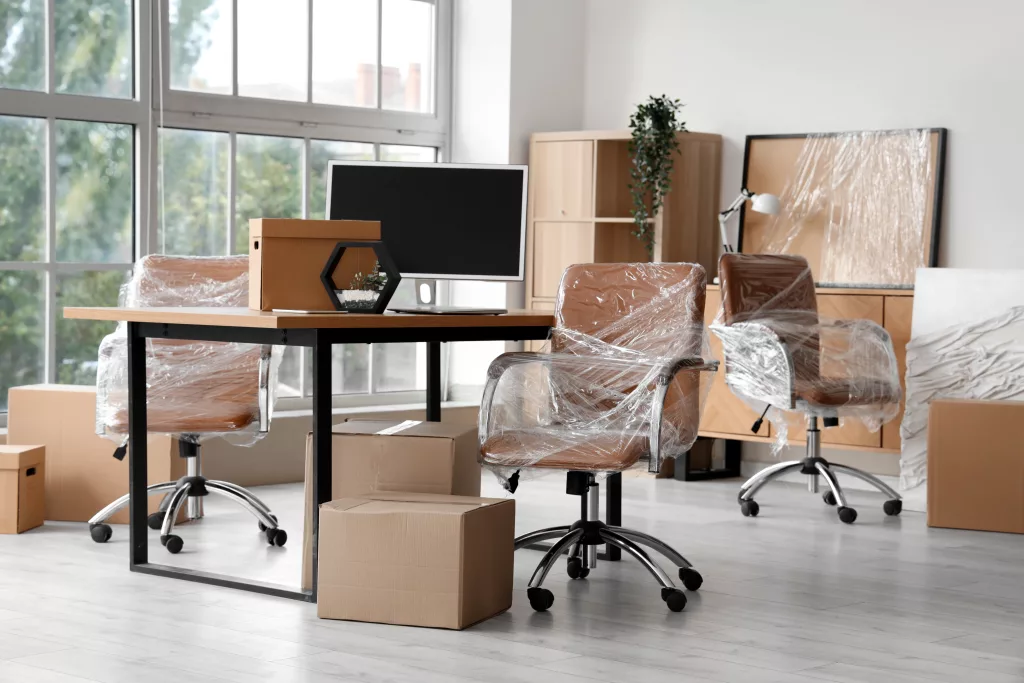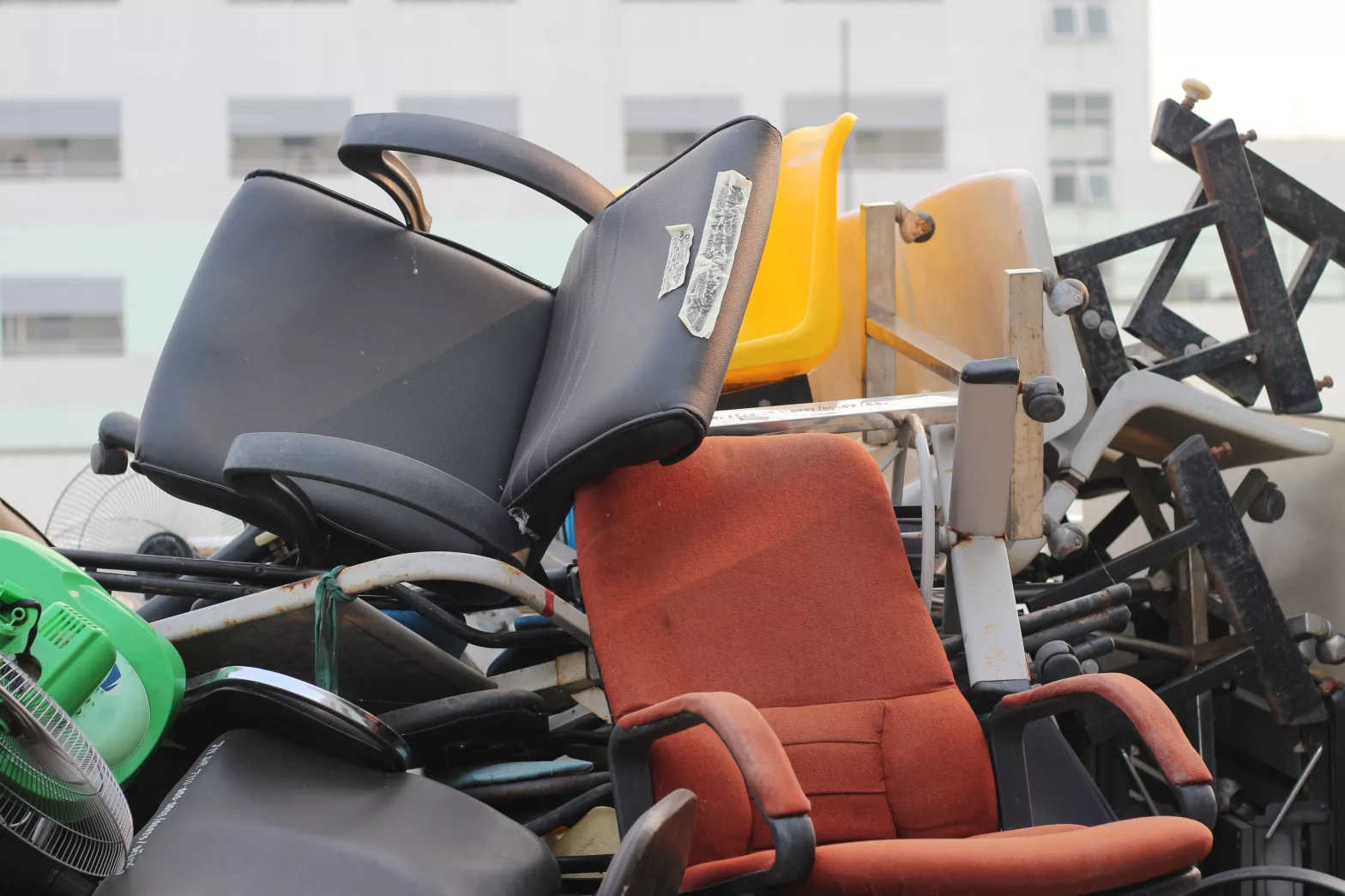Three-quarters of unwanted office furniture goes to the landfill, and that’s bad news for the planet.
When organizations leave an office space, they rarely consider what it means for the planet.
But the impact of those choices is not small. Each year, the U.S. sells $20 billion of new furniture, and 75% of unwanted furniture goes to the landfill. In fact, the U.S. Environmental Protection Agency estimates that 17 billion pounds of office assets are dumped in U.S. landfills each year.
“If you took one-third of all cars made in the U.S. and you just drove them to the landfill, that’s how much we’re talking about,” says Dianne Murata, a founder of Kimiko Designs, an office design and facilities management firm. “That’s ridiculous.”
If companies properly disposed of their office items and furniture, they could eliminate 1.8 million metric tons of CO2, avoid the massive landfill dumps and lower project costs.
“People want to hit the easy button and just call somebody to have them come take it away,” says Murata.
Kimiko Designs, which has worked with such companies as Sony Pictures, Toyota, Honda and Aflac to properly dispose of office assets, created this white paper with detailed steps on how businesses can either reuse, reconfigure, resell, donate or recycle their unwanted office items.
Here’s the nut of how to get started.
1. Re-Use Your Unwanted Office Furniture
Get creative when it comes to those office chairs, filing and storage cabinets. They can follow you to the next space with a little cleaning, reupholstering, repainting or repairing. And bam, you have a modern office design. By doing so, you could cut in half your budget for buying new furniture. Plus, it shortens the time it takes to get up and running in a new space because you’re no longer waiting for new furniture to arrive.

Pick a point person to identify and assess items and ensure they fit into the new space. You will need a good storage space for items, guidelines for what’s acceptable, and a database of items and processes for getting minor repairs. Sometimes, an outside furniture consultant can help manage this new process.
2. Reconfigure Your Office Furniture
Reconfiguring just 40 workstations could divert up to 11,040 pounds from the landfill, according to Davies Office. Plus, it cuts your lead time and costs of buying new furniture. It’s ideal when you’re growing your office footprint, shifting to hoteling or adding new workstations.
Doing this might involve a team to handle interior design, furniture, movers, general contractors, workplace strategy consultants and more, who can put together inventory assessments, scheduling, design, coordination, space planning and technical drawings and potentially buying new components.

3. Resell Your Items
Reselling your furniture through a broker or direct through online marketplaces is another good option to help the environment. Plus, used office furniture is projected to grow to $27 billion by 2027, up from $12 billion in 2019, according to Kimiko. Task seating, benching and workstations and height-adjustable tables are in most demand.
It takes some planning: researching and estimating values, establishing criteria for offers and then coordinating logistics, determining who receives access to your building, who’s responsible for disassembly, and scheduling pickup with the buyer. It may be necessary to update facility drawings, inventory records, and execute sales agreements and receipts of transfer of ownership, too.

4. Donate Your Items
If you can’t reuse, reconfigure or sell your office furniture, plenty of organizations would happily take your furniture off your hands, whether it’s non-profits, schools or small startups. It hits all the marks: tax deductible, ESG milestones, good PR and good karma.
Again, planning is key: it takes legwork to properly identify who receives the donated items, and then company sign-off, schedule delivery and perform touch-up and cleaning may be necessary.
5. Recycle Your Office Furniture
Recycling should be a last resort, but it’s a doable option for metal, glass, natural wood, cardboard and some plastics. If recycled properly, your firm will not only help the planet, but could potentially earn points toward LEED certification by tracking renovation debris or recycling. Check with pre-owned vendors before you recycle, because sometimes they purchase discontinued power items.
In the end, how you decommission your office when you leave matters. Companies that take the time to plan and dispose of items properly will ultimately play a part in change that the planet so desperately needs.
